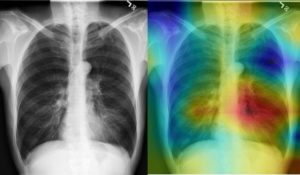The quality of human resources largely depends on the quality of healthcare services of a nation. If any country wishes to grow in terms of economy, the human resource available in the nation must remain fit and healthy. In order to ensure the same, the healthcare sector of the country must operate optimally.
Also, there are several parameters associated with the healthcare sector, which help in determining the overall health of the population. One of the most prominent indicators to predict the quality of health of the population has always been the mortality rate. The higher the mortality rate, the lower is the quality of health sector facilities available.
On the other hand, if a country maintains a low, mortality rate, the performance of the healthcare sector of that country is said to be of superior variety. The mortality rate generally reflects the number of people in a country dying out of diseases or natural causes.
The medical sector provides for two varieties of mortality rates, namely the short term mortality rate and the long term mortality rate. If any person is suffering from a disease for a long time, the disease might cause the death of the person as well. Therefore, the long term mortality rate is associated with the number of people expiring every year owing to prolonged ailments.
If any country can accurately predict the long term mortality rate, detecting the diseases that can be fatal in the future would become easier and suitable and appropriate steps to improve the healthcare facilities to lower the long term mortality rate can be taken. The healthcare sector has been long waiting for an instrument through which prediction of mortality rate would be possible.

The Way Out
According to the latest researches, radiology has the key to determining and predicting mortality rates. One of the most common practices in radiology has always been imaging. With the help of the human body images, the prediction of the exact problems becomes easier and accurate. Hence, the physicians refer to the images of the human body to treat the patients flawlessly.
Again, amongst all the imaging practices, X-ray images are most common. Whether you have a stomach ache or a bone-related issue, physicians mostly suggest an X-ray to understand the exact condition of the organ. Studies and researches have recently revealed that X-ray can be used for predicting the mortality rate in the long term.
Surely the idea is revolutionary, and the healthcare sector is surely going to reap considerable benefits if the application of this method gets approved. The radiologists are using deep learning software to identify the possibility of death from prolonged disease.
The Research
According to the study published in JAMA Network, data from single chest radiography can be useful for determining the increased risk of mortality in the long run. The entire healthcare sector is hoping high, that by integrating the methods of radiology with the advanced AI techniques, the best results can be reaped.
Besides chest radiography, the researchers are also randomizing the data set by including studies on prostate, lung, ovary and many other human body organs. If the result turns out to be similar, the healthcare sector is sure to receive the gift of technology ready to predict the long term mortality aligned with any disease of any limb or organ.
According to the PLCO data, the risk of death increases as the tenure of the disease increases. The risk-score of mortality is as high as 53% when 12 years are taken into consideration, whereas the same reduces to 34% when a span of 6 years is considered. Hence, according to the predictions based on the radiography, the tenure of disease is directly proportionate with the mortality rate in the long term.
Though objective results are still far from reality, having an idea of the fatality of diseases or its potential to take life in the long will surely help the healthcare sector in revising its techniques, treatment methods, and services to ensure better support.
The radiologists used to assess the data manually to predict the exact condition of the body so far. However, researchers are suggesting that deep learning would augment this process by making the method automated. Once the imaging is done, the deep learning software will run an analysis to predict the mortality rate associated with the disease.
AI has already changed the operations of the healthcare sector drastically. The physicians and the researchers have enough reasons to believe that in the future, better techniques can surely be devised by integrating AI software with the existing technologies.
At SepStream®, we make health care solutions better. We integrate the latest technologies with the existing methods to make the services at par with international standards. Also, our services are available at reasonable rates. You can choose from the full gamut of services available with us. Our team of professionals and experts will always make sure that you get nothing short of the best.